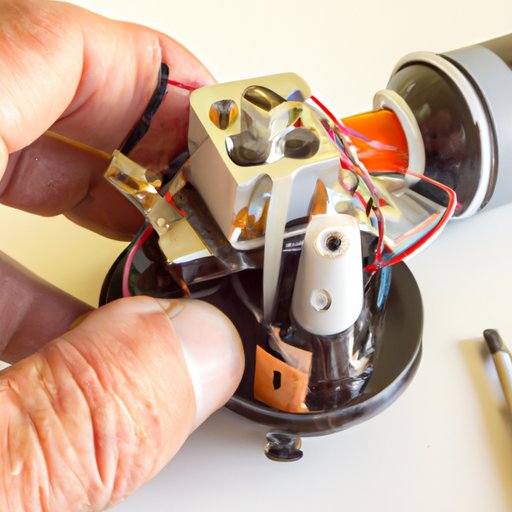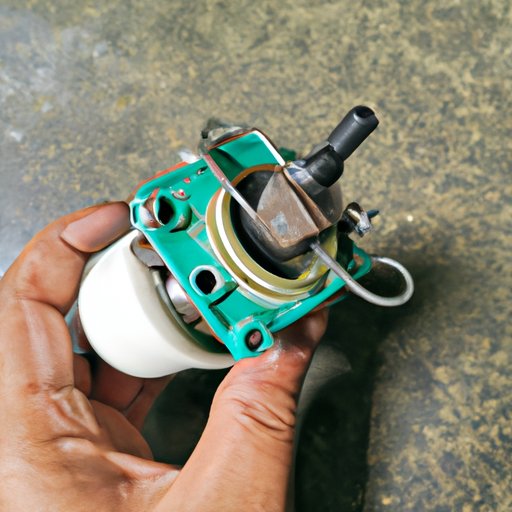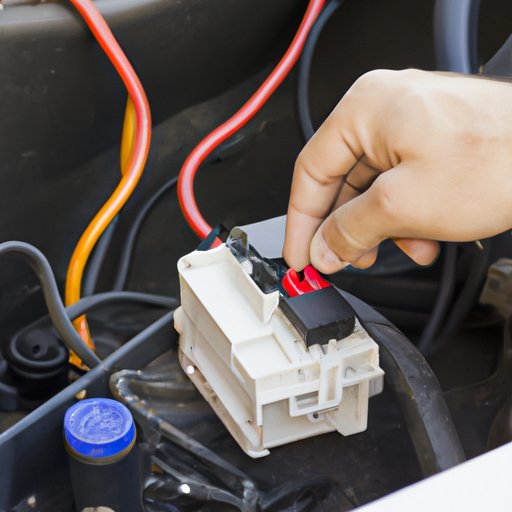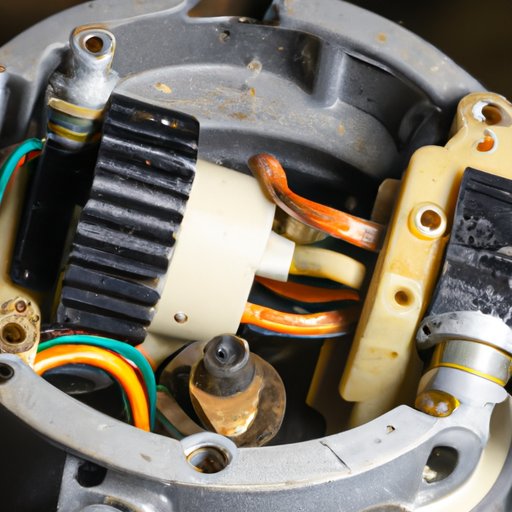Introduction
A starter solenoid is an important component of a vehicle’s electrical system. It is responsible for sending a signal to the starter motor in order to start the engine. In order to ensure that your car is running smoothly, it is essential to regularly check your starter solenoid to make sure it is functioning correctly. This article will provide a comprehensive guide to checking your starter solenoid.

Identifying the Starter Solenoid and Its Components
The starter solenoid is typically located on the side of the engine block near the battery. It consists of two parts: the solenoid coil and the solenoid switch. The solenoid coil is a metal cylinder with a copper wire winding around it. The solenoid switch is a metal lever which is connected to the solenoid coil and is used to activate the starter motor when the ignition is turned on.
Overview of the Problem
If the starter solenoid is not working properly, it can cause a variety of problems. These include difficulty starting the engine, stalling, or an inability to start the car at all. In order to prevent these issues from occurring, it is important to regularly check the starter solenoid to ensure it is functioning properly.
Check the Wiring and Connections to the Starter Solenoid
The first step in checking the starter solenoid is to inspect the wiring and connections. This includes looking for any signs of wear or damage to the wires, as well as checking the connections for loose fittings or rust.
Inspecting the Wiring
When inspecting the wiring, look for any frayed or broken wires. If you find any, they should be replaced immediately. Additionally, check the insulation of the wires to make sure it is intact. Any exposed wires should be covered with electrical tape.
Testing the Connections
Once the wiring has been inspected, the next step is to test the connections. To do this, use a multimeter to measure the voltage between the positive and negative terminals of the starter solenoid. The voltage should be 12 volts. If it is lower than 12 volts, there may be a problem with the connection.
Test the Battery Voltage with a Multimeter
The next step in checking the starter solenoid is to test the battery voltage. This will help to determine if the battery is providing enough power to the starter motor.
Locating the Battery Terminals
The battery terminals are usually located under the hood of the vehicle. They are typically marked with a + and – sign. If they are not marked, they can be identified by their color. The positive terminal is usually red, while the negative terminal is black.
Testing the Voltage
Once the battery terminals have been located, use a multimeter to measure the voltage. The voltage should be above 12.5 volts. If the voltage is lower than 12.5 volts, the battery may need to be recharged or replaced.

Inspect the Starter Solenoid for Corrosion or Damage
The next step in checking the starter solenoid is to inspect it for corrosion or damage. Corrosion can cause the solenoid to malfunction, so it is important to check for any signs of rust, wear, or other damage.
Checking for Rust, Wear, or Other Signs of Damage
To check for rust, wear, or other signs of damage, remove the starter solenoid from the vehicle and inspect it closely. Look for any signs of corrosion, such as rust or discoloration. Additionally, look for any signs of wear or damage, such as cracks or bends in the metal.
Cleaning the Solenoid
If any signs of corrosion or damage are found, the solenoid should be cleaned. This can be done using a wire brush and some cleaner. Once the solenoid has been cleaned, it should be reinstalled and tested again.

Check the Starter Switch and Relay
The starter switch and relay are both important components of the starter solenoid. In order to ensure that the starter solenoid is functioning properly, it is important to test both the switch and the relay.
Locating the Starter Switch and Relay
The starter switch and relay are typically located near the starter solenoid. They may be labeled or color-coded for easy identification. If they are not labeled or color-coded, consult the vehicle’s manual for more information.
Testing the Switch and Relay
Once the switch and relay have been located, use a multimeter to test them. The switch should have continuity when the ignition is on, and the relay should have continuity when the ignition is off. If either one does not have continuity, it should be replaced.
Verify the Starter Solenoid is Engaging Properly
The final step in checking the starter solenoid is to verify that it is engaging properly. This can be done by listening for the engagement sound and testing the engagement mechanism.
Listening for the Engagement Sound
When the starter solenoid engages, it should make a clicking sound. This sound can be heard by placing your ear near the starter solenoid. If no sound is heard, the starter solenoid may need to be replaced.
Testing the Engagement Mechanism
Once the engagement sound has been verified, the next step is to test the engagement mechanism. To do this, turn the ignition on and press down on the starter switch. If the starter solenoid engages, the starter motor should begin to spin. If the starter motor does not spin, the starter solenoid may need to be replaced.
Conclusion
Checking the starter solenoid is an important part of maintaining your vehicle. By following the steps outlined in this article, you can ensure that your starter solenoid is functioning properly and that your vehicle is running smoothly.
(Note: Is this article not meeting your expectations? Do you have knowledge or insights to share? Unlock new opportunities and expand your reach by joining our authors team. Click Registration to join us and share your expertise with our readers.)
